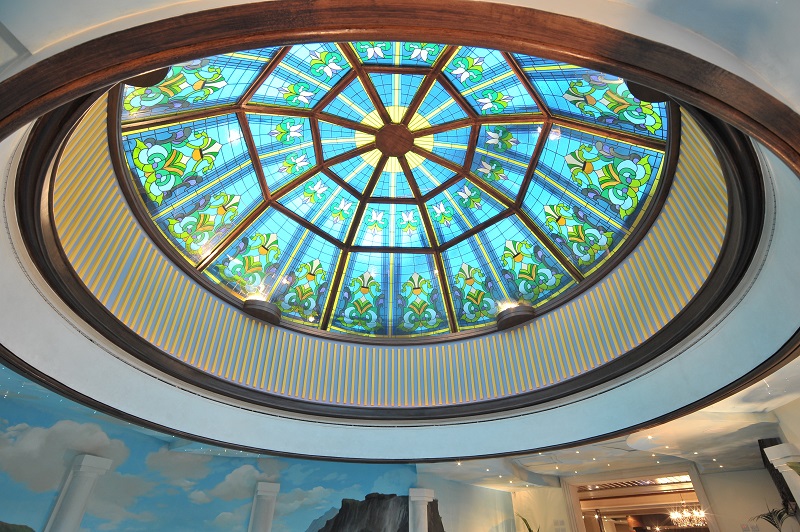Stained Glass 101: History, Process, And Applications
Before glass was manufactured, ancient civilizations used glass-like rocks such as obsidian, for the production of weapons, as a means of currency, and ornamental jewelry. During the early years of glass manufacturing, which historians believed happened in Egypt and Mesopotamia around 3500BC, producing glass was a slow and staggering process. With the invention of the blowpipe by the Syrians, glass manufacturing became easier and faster.
From then on, several techniques to manufacture glass have been invented both for practical and decorative reasons. One of these techniques is stained glass. Today, glass suppliers from all over the world consider stained glass as a widely recognized art form, seen not only in cathedrals but also in modern-day establishments and homes worldwide.
In this blog, we will take a closer look at the brief history, the technology, and the modern-day applications of stained glass.
Stained Glass And Its Applications
The craft of manufacturing stained glass is defined by a delicate technique of cutting different colored-glass pieces which are then set in lead calms. Joined together within one panel, the interlocking puzzle of glass and lead ultimately produces the desired design. It is perhaps one of the most ancient and sophisticated glass techniques. This technique has been popular since the medieval period and still continues to transform places through light and color in the contemporary setting.
The process is very intricate but the outcome is captivating. This is the reason why several establishments approach glass suppliers for stained glass panels to be used for partitions, entryways, ceilings, windows, and doors. Ultimately, stained glass panels bring out the beauty to any environment.
A Colorful History
During ancient times, colored glass was used mostly by the Egyptians and the Romans as ornaments and pieces of jewelry. However, these were only small colored glass pieces. This is partly due to the lack of technology in melting huge quantities of glass since previous furnaces were not hot enough to melt them.
Perhaps the earliest use of stained glass panels was recorded during the 7th century in Great Britain, where stained glass was widely used in places of worship across the country. From colorful rose windows to depictions of religious scenes, stained glass became a staple in churches, monasteries and other religious establishments around Europe.
A century later, not only was it widely used in Christian architecture, but it also became an integral part of Islamic architecture as stained glass has spread throughout the Middle East. During the 8th century, Middle Eastern countries such as Syria, Iraq, Egypt, and Persia (now known as Iran) glass suppliers were flourishing. Stained glass was everywhere; it adorned palaces and mosques across the Middle East.
Today, stained glass can be found everywhere. It has become a design essential fit for contemporary times. Its versatility and aesthetic is truly timeless.
The Process
In ancient times, the production of stained glass panels was very elaborate, time-consuming and labor-intensive. The advances in technology have made it easier and faster to produce stained glass, making it available to anyone. Producing stained glass can be broken down into six easy steps.
Designing the Pattern
The first step in creating stained glass is to design the pattern. This is usually drawn into onto a paper. From the pattern, the colors are also specified. The type of glass is also chosen during this stage.
Cutting the Glass
Once the pattern is finalized, the glass is then cut into the shapes needed to form the design. Cutting glass needs special treatment to be cut into a specific shape as it is brittle.
Painting/Adding Details
For most stained glass panels, painting over the material is not necessary since the glass is already tinted in preparation. For others, however, for more detailed sections of a stained glass panel, special paint, called vitreous paint is used which is a kind of paint that easily melts and merges with the glass.
Foiling/Adding Lead
Metallic foil such as copper or strips of lead, also called lead came are used to join the different pieces of glass together. This, in turn, forms the panel. Lead is used for its flexibility and adaptability.
Glazing
The panel is then assembled or glazed using different methods that include soldering the different pieces of lead to secure the pieces of glass in place.
Cementing
Finally, a semi-liquid cement is brushed on the surface of the stained glass panel to make it waterproof. After this, it is sprinkled with a layer of sawdust or chalk to absorb the excess liquid cement. A brush is then used to remove it until the excess is taken off.
Final Words
Stained glass has truly contributed much to the different aspects of design, especially in architecture. It’s It is one way to translate a creative idea onto glass and improve the overall aesthetic of any place of worship, home, or commercial establishment. In the UAE and the Middle East, Mirodec has become the leading manufacturer in producing bespoke stained glass as well as a range of other remarkable techniques.

